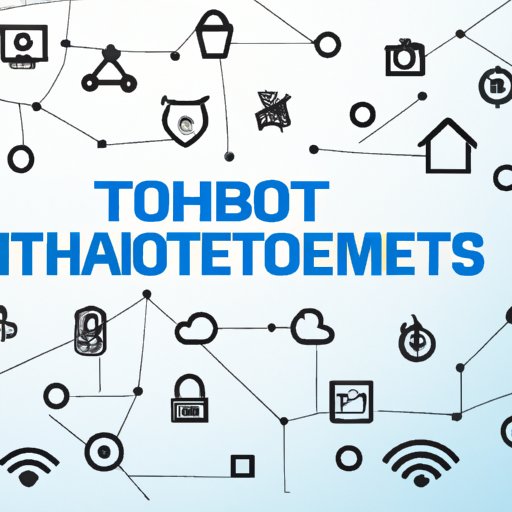Introduction
The Internet of Things (IoT) has revolutionized how we interact with and manage our devices. But this increased connectivity comes with its own set of risks, most notably in the form of cyberattacks. To combat these threats, organizations must take proactive steps to secure their IoT systems. That’s where IoT cybersecurity comes in.
IoT cybersecurity is the practice of protecting connected devices from malicious actors. It involves a combination of technologies, processes, and practices designed to detect and defend against cyber threats. By implementing robust IoT security measures, organizations can ensure that their systems remain safe and secure.
As more and more devices are connected to the Internet, the need for effective IoT cybersecurity measures is growing. In this article, we’ll explore the basics of IoT cybersecurity and discuss best practices for securing your system.
Exploring the Basics of IoT Cybersecurity
Before we dive into the specifics of IoT cybersecurity, it’s important to understand the types of threats it protects against. The most common types of cyber threats include malware, phishing attacks, data breaches, and Distributed Denial of Service (DDoS) attacks.
Malware is malicious software designed to gain access to a computer or network without the user’s knowledge. It can be used to steal data, disrupt operations, or even hijack devices. Phishing attacks involve sending fraudulent emails or messages in an attempt to gain access to personal information. Data breaches occur when sensitive information is accessed or stolen by unauthorized parties. And DDoS attacks involve flooding a system with traffic to overwhelm its resources and render it inaccessible.
Now that we’ve covered the basics of IoT security threats, let’s look at some best practices for protecting your system from them. The first step is to ensure that all devices are properly secured. This means making sure that each device has a unique identifier and password, as well as up-to-date security patches and antivirus software. Additionally, organizations should use encryption to protect data being transmitted over the network.
It’s also important to monitor and audit your system on a regular basis. This will help you identify any potential vulnerabilities and take steps to address them. Organizations should also implement policies and procedures for dealing with cyber threats, such as setting up a response plan and regularly training staff on how to recognize and respond to suspicious activity.
Implementing IoT Cybersecurity Measures
Once you’ve determined the best practices for securing your system, the next step is to implement them. This can be a daunting task, especially if you’re not familiar with the technical aspects of IoT cybersecurity. Fortunately, there are plenty of tools and services available to help.
For example, you can use network monitoring tools to help you detect and respond to threats. You can also use identity and access management solutions to control who has access to your system and what they can do. And there are a variety of products and services designed to help you secure your IoT devices, including firewalls, intrusion detection systems, and secure coding frameworks.
To get a better understanding of how these measures work in practice, let’s look at a few case studies. One example is the City of Los Angeles, which implemented an IoT security system to protect its public transportation system. The system included a range of measures, from authentication and authorization controls to encryption and monitoring. As a result, the city was able to reduce the risk of cyberattacks and improve the safety of its passengers.
Another example is the University of California San Francisco, which deployed an IoT security system to protect its medical devices. The system included two-factor authentication, real-time monitoring, and an automated patching system. As a result, the university was able to reduce the risk of data breaches and improve patient care.
Conclusion
IoT cybersecurity is an essential part of protecting connected devices from cyber threats. By understanding the threats and implementing best practices, organizations can ensure that their systems remain safe and secure. From implementing authentication and authorization controls to deploying automated patching systems, there are a variety of measures organizations can take to protect their IoT systems.
From the examples above, we can see that with the right measures in place, organizations can effectively protect their systems from cyberattacks. With the right approach, organizations can ensure that their systems remain secure and their customers’ data remains safe.
In conclusion, IoT cybersecurity is an important element of any organization’s security strategy. By taking the necessary steps to protect your system, you can ensure that your devices remain secure and your data remains safe.
(Note: Is this article not meeting your expectations? Do you have knowledge or insights to share? Unlock new opportunities and expand your reach by joining our authors team. Click Registration to join us and share your expertise with our readers.)
